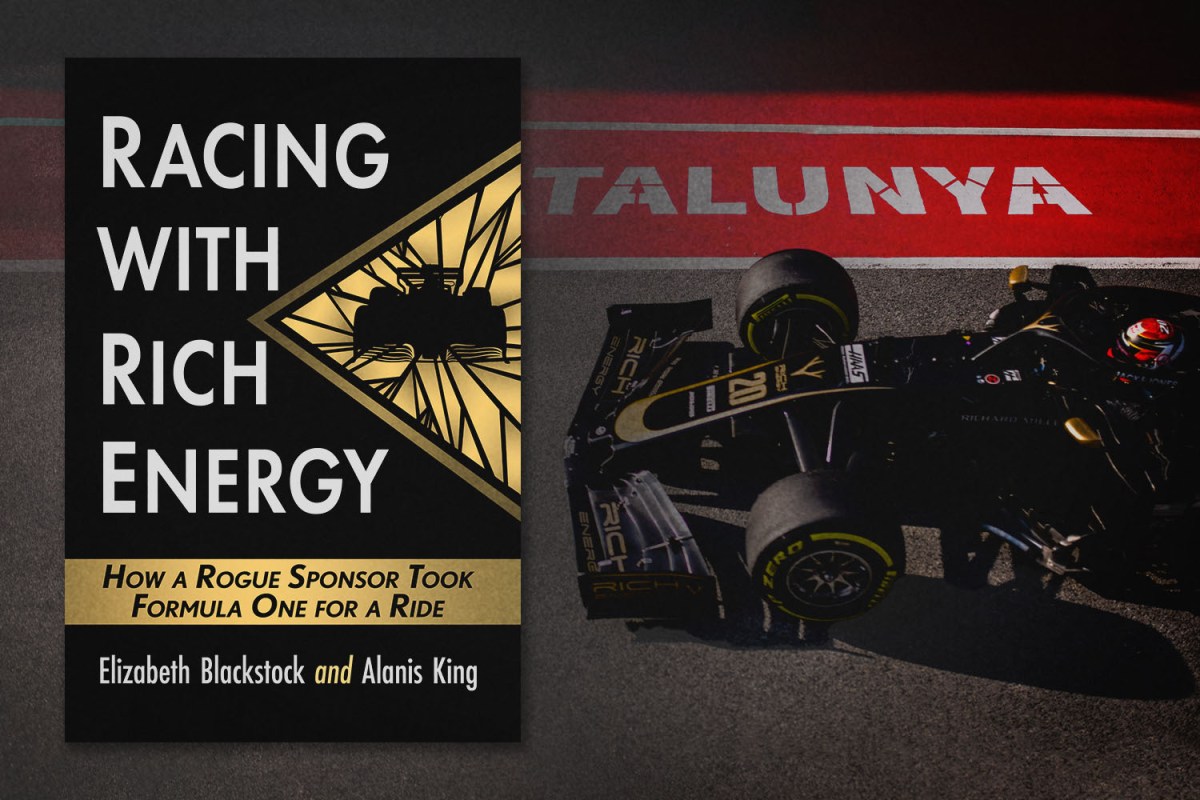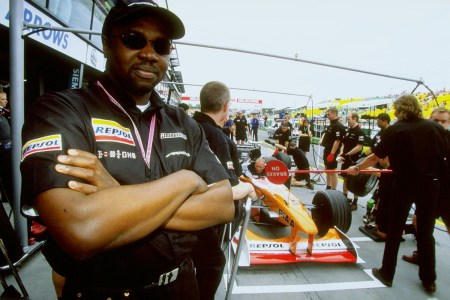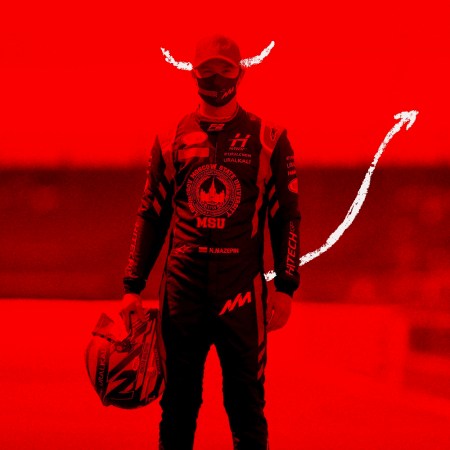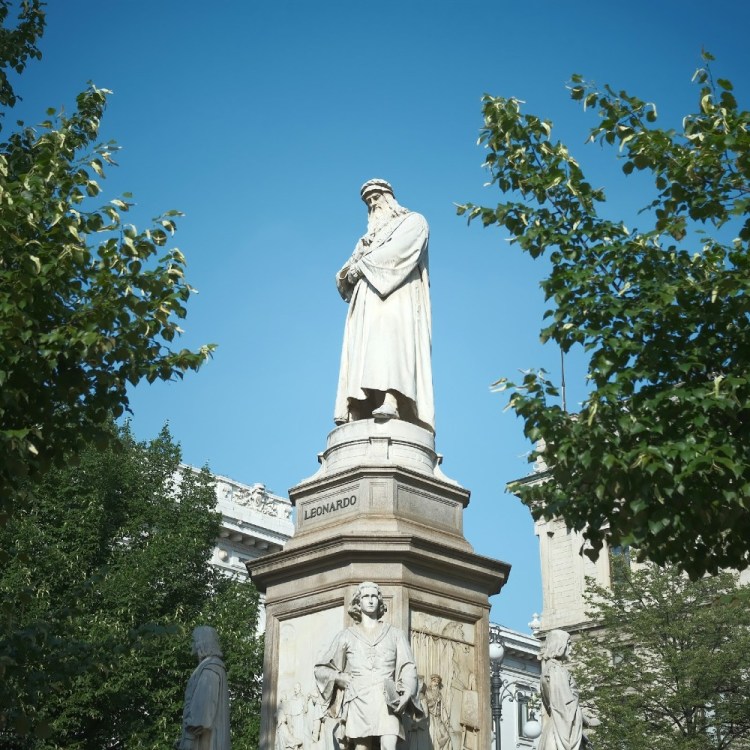If you’re a motorsports fan who isn’t familiar with F1’s most recent surreal sponsorship scandal — where a sketchy energy drink manufacturer with less than $1,000 in the bank managed to charm its way into position as the title sponsor of the Haas F1 team for the 2019 season — then the book Racing With Rich Energy: How a Rogue Sponsor Took Formula One For a Ride is the perfect place to start.
Written by journalists Alanis King and Elizabeth Blackstock, it unravels the chaotic thread that details how Rich Energy’s controversial and Twitter-addicted CEO William Storey hoodwinked an entire sport about his company’s financial resources, plastering its name and logo across a race car to advertise a beverage of which only a small number of cans were ever produced. It was a deception that ultimately saw Haas F1 deprived of millions of dollars when the sponsorship agreement was abruptly terminated mid-season.
As one of the wildest scams ever perpetrated in the upper echelons of racing, investigating the Rich Energy saga taxed the detective skills of both King and Blackstock. The two turned their formidable talents towards tracking down the truth in a world where the promise of big glamor and bigger bucks threatens to blind even the most experienced of business owners. After first turning the spotlight onto Rich Energy’s questionable financial footing in a feature for Jalopnik just over three years ago, the pair were approached to expand the story into a full-length book that accounts for each and every misplaced promise during the company’s destructive whirlwind tenure in the sport.
It was a task that required opening fresh wounds for many of the original participants, backed up by an intensive forensic effort that unearthed court documents and business records, not to mention thousands of tweets from the attention-seeking Storey. How did the pair pull it all together and produce one of the most comprehensive accountings of F1 malfeasance ever printed? We went on the record with King and Blackstock to get all the details.
InsideHook: This is a sore subject for most of the people who are involved. Rich Energy’s sponsorship was embarrassing for Haas, it was embarrassing — well, I don’t know if anyone on the Rich Energy side is capable of being embarrassed — but it’s not something you’d want to advertise. With that in mind, when you set out to write this book, what kind of challenges did that pose when you were looking for first-person sources to try to get an account of what actually happened?
Elizabeth Blackstock: The biggest challenge we had was that while Alanis and I have established [journalism] careers, we don’t have the multi-decades-long careers that you normally would when taking on this kind of project. And we’re both American [Ed. note: F1 coverage is stronger outside of the United States]. So I think we were already starting out on the outskirts of the Formula 1 world as we were covering this. We’re not traditionally embedded, not going to every single race, that kind of stuff. So that was one of the bigger challenges, having people understand that we’re legitimate journalists with a legitimate goal for this project. We had people who were concerned it was going to be a puff piece or something promotional.
And one of the other big struggles was just the fact that there were so many people involved. I think we reached out to almost over 160 people. That’s correct, Alanis?
Alanis King: I think it was getting close to 200 there.
EB: Just trying to kind of keep track of everyone, what they were doing, what their role in this whole scheme was. And then some people didn’t have readily available contact information, so it’s trying to hunt them down on LinkedIn. I think as we started to speak to people, there was the hesitance from a lot of folks that this was something very fresh and could reflect poorly on them. No matter what discipline they were in, whether they were [someone who was sponsored], someone tied with Rich Energy in some way, someone from the Haas team, there was a lot of hesitance that this would be a negative for their career. They didn’t want to be seen necessarily slamming anyone. But they also had NDAs that protected certain things and prevented them from speaking about stuff.
AK: A lot of people didn’t want to talk about it. Something we learned very early on when we were researching this was the Haas F1 team doesn’t have a lot of people go in and out of it. There aren’t a lot of people who have left Haas F1 because Haas F1 is a small company. Compared to the other Formula 1 teams, it has a tiny staff — in 2019, I think it was like 250 people, [while] places like Mercedes and Ferrari have a thousand.
So you have a smaller staff and then you have to find people who have left, because you want to be respectful of the people who are still there. [We] reached out to about 40 people, talked to five, and that was enough because I interviewed all the former employees and I spent about three hours on the phone with each of them, and we got all their employment proof. I made sure that their stories corroborated each other, and that helped a lot. It really painted a picture of what was going on there.
Elizabeth and I went into writing this book knowing that we would go [directly] to Haas and Rich Energy last because we needed to have all of our questions beforehand. So we wrote the entire book except for the places we wanted them to fill in, and the places that they would influence if they did talk to us. But when they both chose not to participate, it was okay because the story didn’t hinge on them participating. The story could stand without it. [Ed. note: Rich Energy’s CEO read the questions sent, but did not respond to interview requests, while Haas said “We don’t want to participate” in response to the questions being sent.]
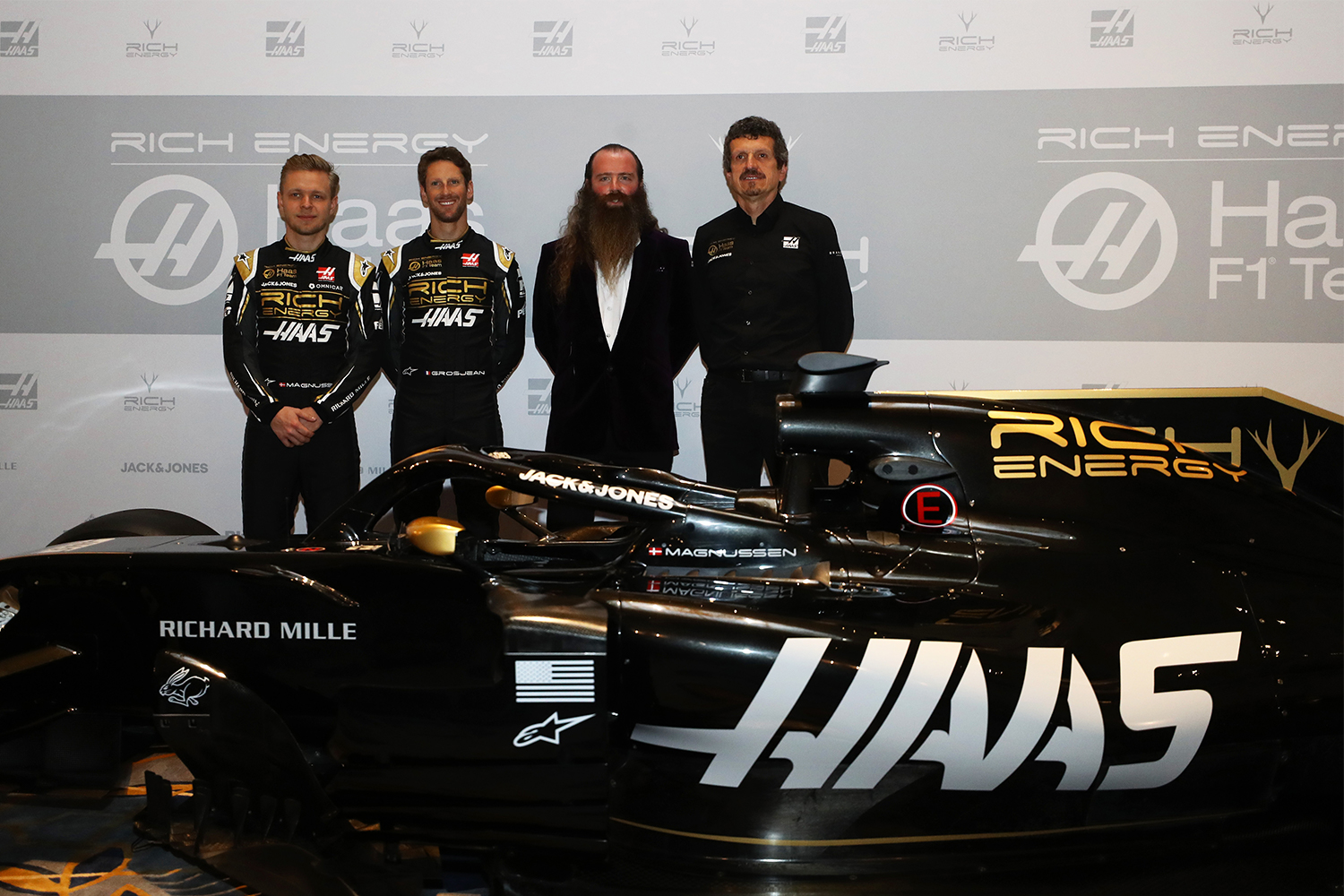
A story like this, it’s very much like a forensic police investigation in a lot of ways. It’s not like a crime was committed, but there was malfeasance and it’s almost an accounting where you have to go back and trace the roots of the weirdness to the beginning. You were able to speak to the former Haas employees, you can confirm their identities, you can confirm when they were working and what they saw and what they didn’t see. I believe you had interviews with CEO William Storey from the previous coverage you had done on Rich Energy, is that correct?
EB: Yes.
So when you were trying to verify the few people from Storey’s circle who would speak to you about it, what was that like?
AK: That was hard. You have to be very careful about who you’re reaching out to, and get receipts. When it comes to employment, you get someone to show you their tax documents. If it’s owning a business or working with someone, you get them to show you, often on video so that it can’t be doctored, documentation of their work, whether that be communications with the person, company documents, etc.
EB: The big one was Dr. Lawrence Chatters, who brought Rich Energy to the United States prior to it being affiliated with William Storey. If a person is willing to speak on the record, they’re not necessarily guaranteed to be telling the truth, but there’s a better inclination for them to do so because that’s going to reflect exactly on them as to what they’ve said. So I think in Dr. Chatters’s case, it was a matter of setting the record straight. Because there was all this chaos and confusion, he wanted to make sure that people understood he wasn’t part of the later affiliations with the Haas team. He did his own thing.
A lot of other folks were not interested in talking, largely because they still hold some sort of ties to William Storey. I’m particularly thinking of Dražen Majstrović, who developed the initial Rich Energy drink brand for Croatia. It was one of those situations where you kind of have to give respect to people who turn you down or ignore you or whatever the case may be. You send your follow up emails and ask how they’re doing and if they’ve changed their mind and if they just don’t respond, there’s not much you can do about it. If they say no, we’re not going to press you. But it was a little bit difficult getting those first initial people, making sure that they were who they said they were and even just finding someone who was like, “Yeah, I’ll talk to you about it.”
That Time an F1 Team Fell for the False Promises of a Nigerian Prince
In the ’90s, Malik Ado Ibrahim promised Arrows $125M. The fallout was worse than any email scam.I want to circle back to what you said earlier about not having a decades-long career of motorsports reporting that people in the publishing world or the racing world would expect for this type of book. Do you think that that perspective was a strength for you in terms of writing Racing With Rich Energy, and do you think that it allowed you to maybe ask questions or push into areas that someone whose living relies on maintaining their inside access in motorsports would not be able to do?
EB: I think it was a double-edged sword. Not being deeply embedded within the Formula 1 world allowed us to ask harder questions, and even to just write the book in general. I think because it’s still so recent, it’s kind of a dark mark on Formula 1’s history. It’s not this kind of retrospective look back at something that happened 25 years ago. This is so modern and fresh within the current Liberty Media-owned version of Formula 1. We don’t have to play nice with all of these resources in our day jobs, which I think it really did help.
It also was a little bit of a hindrance in the sense that the work that I was doing on this book particularly disqualified me from being able to work with Haas in any other way. I had an opportunity to actually do a really big deep-dive feature [for a publication] and they wouldn’t work with me as the writer of that.
The recent aspect of this story is great because people’s memories are fresh. That’s a bonus, but the fact that many of these people are still involved in the situation they were involved in just a few years ago is kind of a counterweight to that. Do you feel like the book that you wrote now would have been different from a book written maybe eight or nine years from now?
EB: I do think that there were positives and negatives of both aspects of writing this book so recently. In the immediate aftermath, you still have a lot of the people whose memories are fresh. That is a really, really great thing. You have a lot of people who are actively looking to set the record straight about their participation in whatever had happened here. They wanted to make sure that people were educated and understood what had happened to them, and to use those critical-thinking skills to understand in the future when someone is pitching them a sponsorship that sounds maybe a little bit too good to be true.
At the same time, had we written this 10 years from now, I think a lot of people would have been more willing to talk. They wouldn’t have been involved in the industry. Maybe they’d have retired. NDAs might have expired. But at the same time, [by delaying the book] you’ve opened up this opportunity for someone to be sponsored by Rich Energy again.
AK: Ten years from now, sure you might get a bunch more people who have retired, who are more willing to talk about it, but you will lose a lot of those firsthand documents and those firsthand events that happen. If we did this 10 years from now, I wouldn’t have been able to dig and find all of these different, wild posts online and find the people involved with those posts from reverse image searches, or go find [certain types of] documentation.
During the whole Rich Energy F1 [sponsorship], no one, including me and Elizabeth, reported that Red Bull actually went after Rich Energy in court because none of us knew. And if it were 10 years from now and we found out that Red Bull went after Rich Energy in court, maybe that area’s court system switched to a new filing system and they don’t have those documents available anymore. You’ve lost that documentation. You no longer have access to it. I think about this a lot.
I think about historic sponsors in Formula 1 and how I would have loved to know the story right then and there, like the Moneytron machine, which is in the book. Moneytron machine was wild. It was a supercomputer that was supposed to predict the stock market, but the only person who had access to the office that the computer was in was Jean-Pierre Van Rossem, who was the dude behind it. I want someone to go look in that office and tell me if there’s anything in there. Ten years from now, you can’t go look in that office and do that, and so you lose that by not going after it right away.
EB: And we even missed this during the process of writing the book because Rich Energy deleted thousands and thousands of tweets as a result of that lawsuit with Red Bull. So we had a lot of tweets that we had referenced initially that we could no longer go back and link to, because the tweets were deleted. They had just totally disappeared. Again, that’s a footprint that wouldn’t exist 10 years from now, and that’s part of what made the story so chaotic.
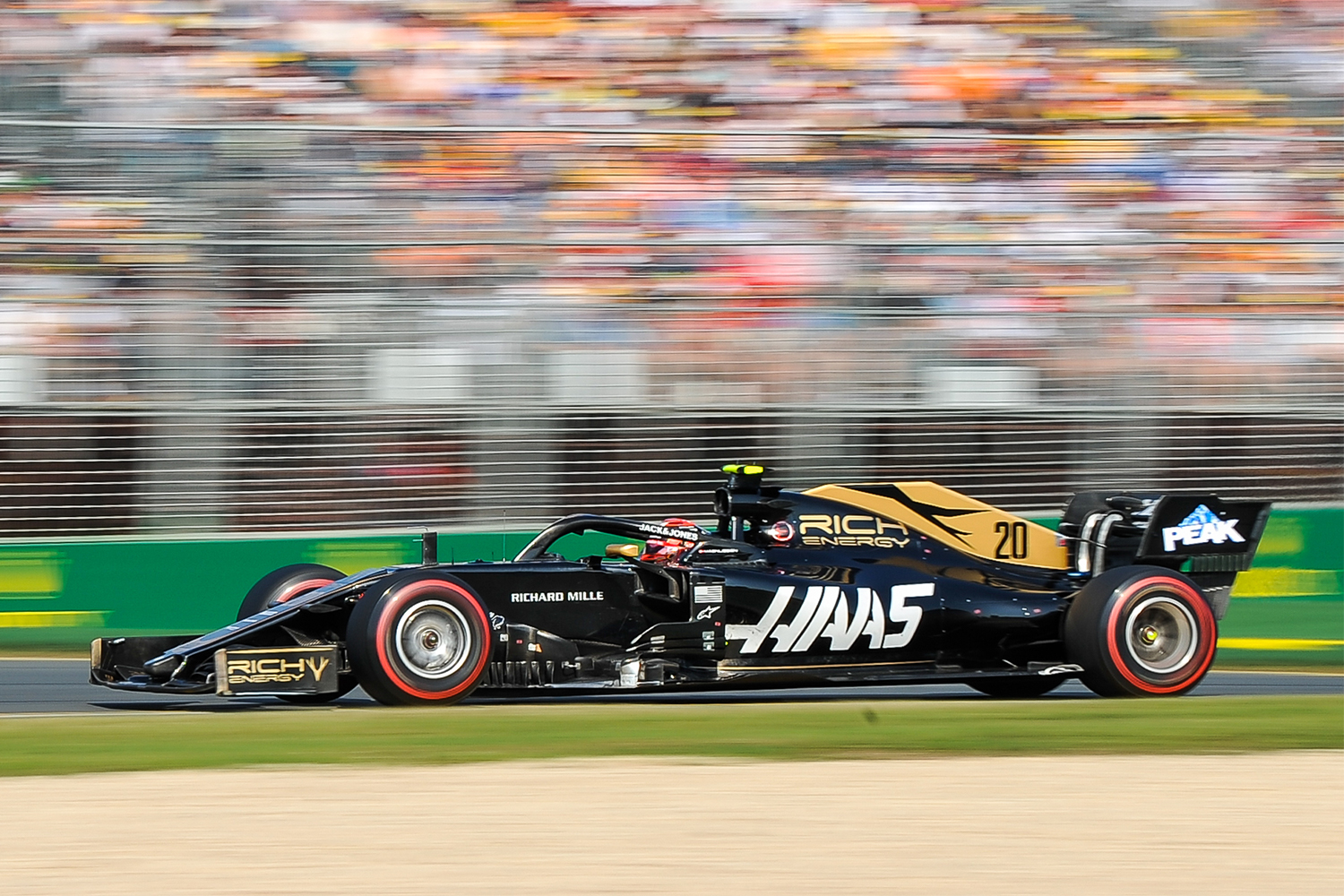
What were the roadblocks that were the most troublesome during this research process? Was there anything that really stands out as being the most difficult part of pulling things together?
AK: The most tedious part was the fact-checking. What a lot of people might not know about [reporting] is, if you’re reading it from the right person, that material has been fact-checked multiple times. We had a color system. The original draft was in black, and then if it had been fact-checked once, we put it in purple. And if it had been fact-checked twice, we changed it to maroon. And I had to fact-check once, and Elizabeth had to fact-check once. You cannot fact-check as you’re writing. That does not count. And you have to go word by word. The book is about 100,000 words.
Elizabeth and I spent kind of every single day of our lives just coworking on this for three years, on the computer and on the phone, in the same Google Doc, in whatever. And so we would literally read it on the phone with each other and see if things were in the right spot, and if it all made sense. We were reading the book out loud. And in addition to that, we printed it out, edited it with a red pen, the whole thing.
I want to ask about things that might have caught you off guard moving from shorter-form journalism to something like writing a book. The kind of writing journalists typically do on a daily basis is more ephemeral and relies on context that can be inferred from the moment of publishing. But with a book, it’s not like that. Was there anything you had to leave behind, or new skills that you had to learn versus what you had honed writing shorter form stuff?
AK: I think when you write shorter form and you write online, you have a more casual approach to all of it. And when you’re writing a book, everything becomes more concrete and it becomes a lot scarier because you’re like, oh my goodness, I need this to hold up. The way Elizabeth and I approached it was we started with our list of stories that happened and our list of stories that we needed to add. I took half and Elizabeth took half. And we just started writing these individual stories and putting them in documents. And then we were like, okay, where do these stories fit together and what transitions do we put in the middle?
Elizabeth would write a section and I would come in and I would swap out whole sentences or swap out different words so it sounded more like both of us. She would come into something I wrote and she would start swapping stuff out. So it didn’t sound like one or the other, right? We changed things because we needed to sound more like each other. It wasn’t just going from short format to long format. It was melding our writing together.
When you decided to take your initial reporting and interest in Rich Energy and turn it into a book, how long did it take to go from that idea to the fully formed and signed book contract? What was that process and negotiation like?
EB: We actually wrote this book because we were asked to by an agent who reached out to us. He thought that this Rich Energy thing was crazy. We signed some contracts and that whole deal kind of just fell apart because the agent didn’t feel capable of taking on the project. At which point we had written most of the manuscript, and had a wonderful proposal.
We were kind of up in the air about what we wanted to do. In publishing, the traditional way is to sign with an agent and that agent will shop out your proposal on your behalf and reach out to companies and ask them if they’d like to buy it, ideally set up a bidding war. We wanted to just bypass that because at that point we wanted to have the book published. We did some research into publishers who frequently publish motorsport and automotive books and reached out to a few of them, and McFarland was ultimately really responsive.
That enabled us to work directly with the publisher. That took a couple of months, but because we had so much written we basically had a final product. The book that we had written at the time could have been published. So it was a little bit of a process but I think we had a little bit of an easier time because we had that agent who, even though he didn’t want to work with us after a while, gave us the necessary tools we needed to stand on our own two feet afterwards.
This interview has been edited and condensed for length and clarity.
The Charge will help you move better, think clearer and stay in the game longer. Subscribe to our wellness newsletter today.
